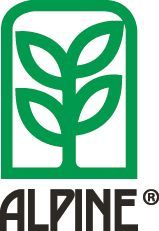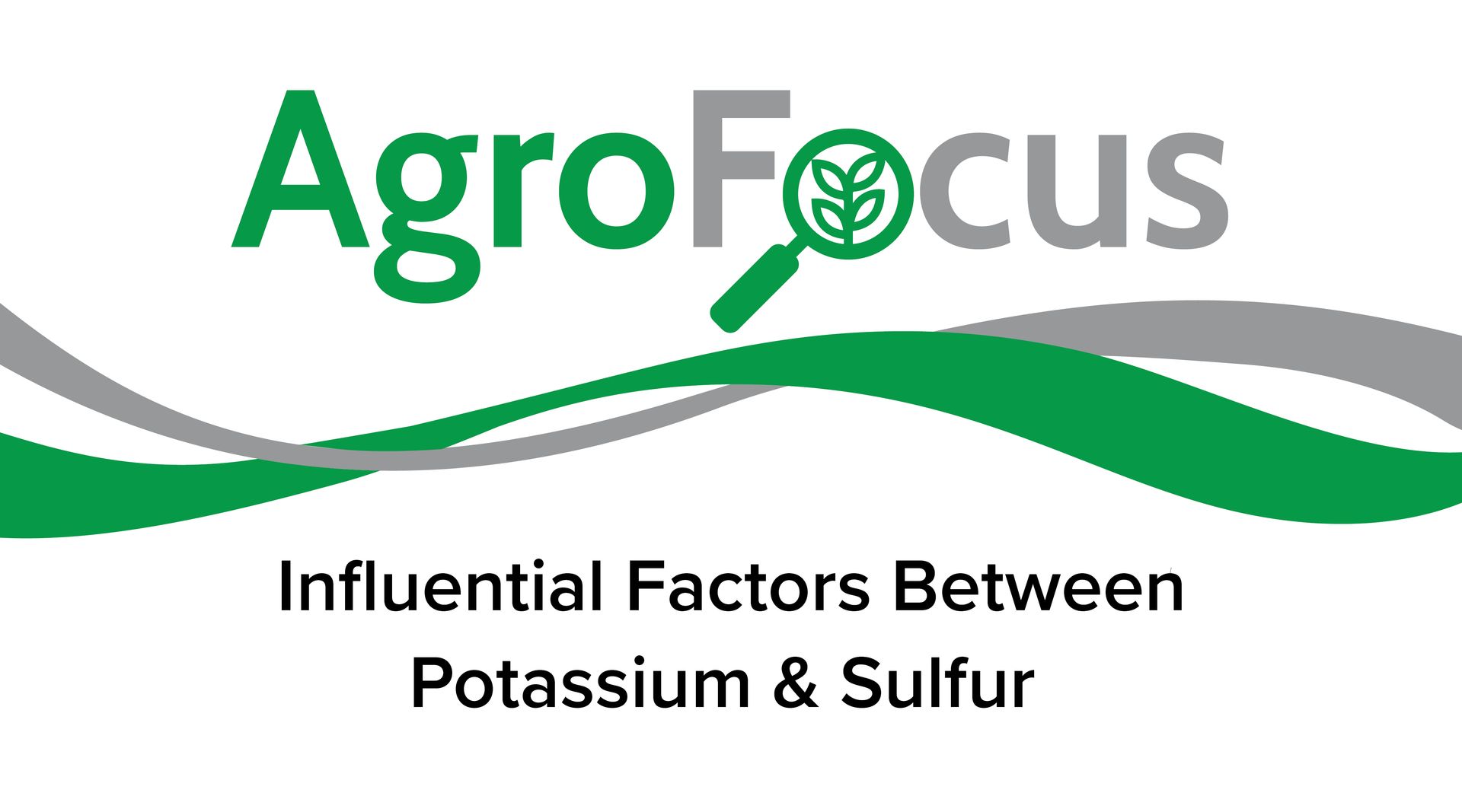NACHURS ALPINE SOLUTIONS RECEIVES PATENTS FOR POTASSIUM ACETATE TECHNOLOGY
Nachurs Alpine Solutions • February 17, 2020

MARION, OHIO – February 18, 2020 – Nachurs Alpine Solutions® (NAS), a division of Wilbur-Ellis, announced today that it has received two patents from the United States Patent and Trademark Office for its potassium acetate technology. This technology is a method of fertilizing an agricultural crop using an environmentally friendly and versatile high potassium-content liquid fertilizer.
Plants extract a variety of nutrients from the soil to maintain healthy growth and development. With vital nutrients becoming less plentiful in soil, it is important to provide supplemental nutrients to the crop throughout its stages of development.
Potassium is required by a growing plant to stimulate early growth, increase protein production, and activate enzyme and hormone systems within the plant. These systems impact the plant’s ability to withstand biotic and abiotic stress and improve the plant’s resistance to diseases and insects. Potassium also increases the efficiency of water use and transforms sugars to starch.
Additionally, potassium acetate results in lower phytotoxicity damage compared to other sources of potassium for liquid fertilizer products. It also may be applied in a variety of ways, including in-furrow, foliar, side-dressed, soil injected, broadcast, fertigation or other applications.
Lab tests and field trials have proven potassium acetate to be an effective and safe source of potassium for crop production. NAS potassium acetate technology is branded in the U.S. as NACHURS Bio-K® and in Canada as ALPINE K-Tech®.
To learn more about NAS’ full line of potassium acetate products, please contact us at (800) 622-4877 x233 or visit the NAS® website at www.nachurs.com or the ALPINE® website at www.alpinepfl.com.
###
About the Wilbur-Ellis Companies
Founded in 1921, the Wilbur-Ellis companies are leading international marketers, distributors and manufacturers of agricultural products, animal nutrients and specialty chemicals and ingredients. By developing strong relationships, making strategic market investments and capitalizing on new opportunities, the Wilbur-Ellis companies have continued to grow the business with sales of over $3 billion. For more information, please visit www.wilburellis.com
About Nachurs Alpine Solutions®
Nachurs Alpine Solutions (NAS) became a division of Wilbur-Ellis in 2019. NAS is a 73-year-old specialty chemical business that pioneered the low salt liquid starter fertilizer industry by introducing the first true solution liquid NPK fertilizer. Today, NPK liquid fertilizers sold by NAS are marketed under the NACHURS brand in the United States and under the ALPINE brand in Canada. For more information visit www.nachurs-alpine.com

As I travel across Canada, it has been great to see moisture along much of my path. Greener pastures and ditches in Alberta, lush spring wheat, durum, and lentil crops in Saskatchewan, as well as many triticale, grass, and alfalfa fields, are being cut from British Columbia to Nova Scotia. I do not want to forget those potatoes spread across our country along with many specialty crops. As heat and moisture have brought germination, emergence, and vegetation growth, our crop nutrient management remains a key to success as we monitor the “Points of Influence.” Crop scouting, accompanied by tissue or sap samples, supports crop-based crop protection and foliar nutrient applications. As we have been programmed to concentrate on nitrogen, we are putting a lot of pressure on one nutrient to solve many deficiencies and concerns while ignoring the balance of fertility our crops may be looking for. In this blog post, I will not cover all the nutrient requirements but concentrate a little on magnesium, as I refer to what makes plants green. This spring, a significant amount of discussion surfaced around magnesium, and several growers requested magnesium for their cropping plans. Sometimes, what is new is old; looking back, magnesium has been a big part of many crop plans for decades. In sandy soils, specialty crops, and our high calcitic soils, we are looking to balance our oxygen and moisture space in soil levels. To better understand what we are looking at, I have included a list of what Mg is responsible for as well as soil activity stated: Magnesium Crops require magnesium to capture the sun's energy for growth and production through photosynthesis. Magnesium is an essential component of the chlorophyll molecule, with each molecule containing 6.7 percent magnesium. Magnesium also acts as a phosphorus carrier in plants. Necessary for cell division and protein formation. Phosphorus uptake could not occur without magnesium, and vice versa. Magnesium is essential for phosphate metabolism, plant respiration, and the activation of several enzyme systems.

Welcome to June 2024. As discussed in our March article, weather is what we receive from above, and we do not make the arrangements. Again, what is in our control is taking our past lessons and applying our experiences to the 2024 crop. As we continue to “learn, unlearn, and re-learn,” we can better understand the points of influence that we can utilize to react to our crop's needs. With most of the germination and emergence behind us, we are looking to drive vegetation by developing the best foliage we can, capturing maximum sunlight, and amplifying plant energy. This energy will be the key to supporting reproduction and then crop fill throughout the season. This is where tissue and sap sampling must be utilized to build a balanced foliar program. Once we understand a crop's requirement, we can look at a demand curve and design a program to enhance plant health. Foliar applications are often a rescue, and not in the plan, as a tool, but are very valuable in utilizing soil-applied fertility through root activation. To better understand foliar applications, we must understand what we want to achieve. First, we need to have nutrients that can be taken up by the plants. Second, we need to understand how we will feed the plant, and thirdly, we need to apply fertility with a purpose. When applying foliar products, the rates will seem inadequate for the deficiency, but what is the overarching goal? “One of the touted benefits of foliar fertilization is the increased uptake of nutrients from the soil” (George Kuepper, NCAT Agriculture Specialist, Foliar Fertilizer 2003). As we continue to learn more about root-to-soil interaction, the measurement of root tips leads to a better understanding of how each tip, expressed through foliar applications, amplifies nutrient uptake. Regarding plant fertility, our ALPINE foliar products contain orthophosphate, which plants can readily absorb through vegetation. The potassium source, ALPINE Bio-K, has the benefit of smaller molecular size and a low deliquescence point, extending available uptake time. The ALPINE Micronutrients are also chelated, allowing them to be available for uptake by the plant. As for foliar feeding your crop, we want to apply products when the plant is best available to receive them. In the mornings, when the stomata are open, stay away from the day's heat stress. If a foliar dries on a leaf, it must re-wet to become available again. It is also advantageous to feed a healthy crop and fend off stress instead of waiting to see the stress and deficiencies prior to a reactive application. It is also essential to understand how nutrients move via diffusion. So, when we can keep our foliar fertilizer in solution for a more extended period, the concentration increases during water evaporation, allowing the fertilizer to be taken into your crops. Applying with a purpose is what I continue to strive to learn, causing me to read, experiment, and incorporate new ideas along the way. Take our ALPINE K20-S, for example, a 3-0-20-8S-0.2B-0.1Mn-0.002Mo blended foliar. Nitrogen works as an adjuvant to enhance nutrient uptake and increases the formation of amino acids required to develop protein along with sulfur and molybdenum. The ALPINE Bio-K, a potassium acetate source, increases plant metabolism, nutrient uptake, and feeding microbiology. As a result, the package, which also includes boron, is designed to improve uptake and assimilation to better equip your crop for success. When combining ALPINE K20-S with ALPINE CRN-B later in the vegetation season, we can stimulate crops to greater success. If the rain continues, this combination has proven to strengthen crops struggling with root rot and K & B deficiencies. I would also like you to consider working with your nitrogen applications, knowing that straight N is not always your plant's best friend. As we continue to look at humic and fulvic acids, along with Boron, Magnesium, and Calcium, in blended situations, there will be much more to write about in the near future. If you have further questions, don't hesitate to contact your ALPINE DSMs and Dealers. I wish everyone a safe and prosperous Summer ahead. Steve McQueen, Agronomy Manager








